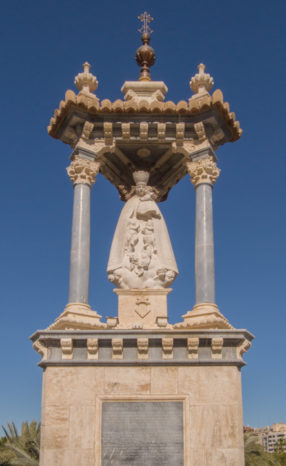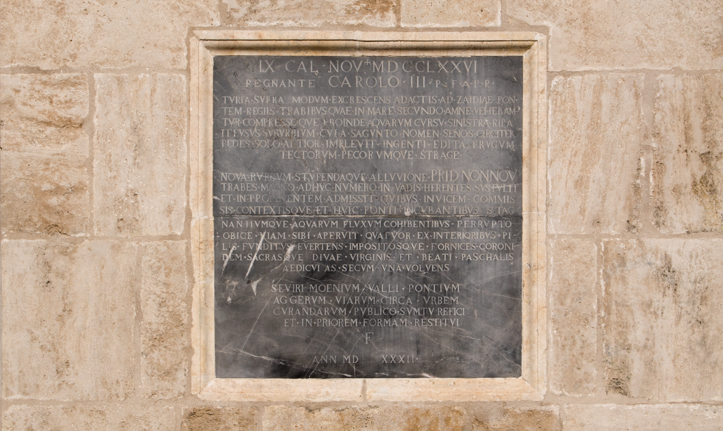Puente del Mar
Built at the request of the Board of Walls and Valleys between 1592 and 1596 (sixteenth century) with ashlar stone, after the previous wooden bridge or masonry was destroyed by a flood of the Turia in 1589.
It receives the name of Puente del Mar, because this is the natural way to the Grao or port, from where many goods that arrived in the city of Valencia by sea came. It is the work of the stonemason of Xàtiva, Francisco Figuerola, although a resident of Valencia (lapicida sive architector).
At the completion of the bridge in 1596 it was agreed to install a mansion that was commissioned to Figuerola himself. Inside is placed a cross and on the roof images of San Vicente Ferrer, San Vicente Mártir and San Juan Bautista. In 1709 lightning partially destroyed the house so it was recomposed but changing the cross for an image of the Virgin of the Forsaken, work of Francisco Vergara the Elder in 1721. The rest of the images of the saints are removed. Around 1677 another second mansion was placed with an image of San Pascual Bailón, opposite that of the Virgin.
The flood of 1776 deteriorated both houses, so the New River Factory ordered the sculptor Francisco Sanchiz to restore the image of San Pascual and build another new image of the Virgin of the Forsaken. The images were placed again in 1782. The previous image of the Virgin of the Forsaken by chance of fate would finally go to the Imperial School of Orphaned Children of San Vicente where it would be completely destroyed during the Civil War in 1936.
During the eighteenth century reforms were made to the bridge, consisting of putting ball ornaments on the balustrade and opening some seats or benches on its side walls. However, the bridge suffers constant damage due to the successive floods that occur, so the images of the houses are constantly renovated and repaired. In 1936 both images were destroyed in the civil conflict.
In 1943 the sculptor from Vila-real (Castellón) José Ortells López was commissioned to carve a new image of San Pascual Bailón, while Vicente Navarro Romero was commissioned to sculpt the new image of the Virgin of the Forsaken(1946) made of cream marble. Images that are those that are preserved today in the same original place where the first ones were placed back in the sixteenth century.
The bridge is a work of cantery, built with ashlar stone, with ten lowered ogival arches of 15.50 meters of span each. It is 160 metres long and 8.35 metres wide. In 1933 it became a pedestrian bridge after Javier Goerlich León made the great staircases and the two pinnacles that adorn both sides of the bridge.


Dades bàsiques
Puente del Mar, 46004 Valencia